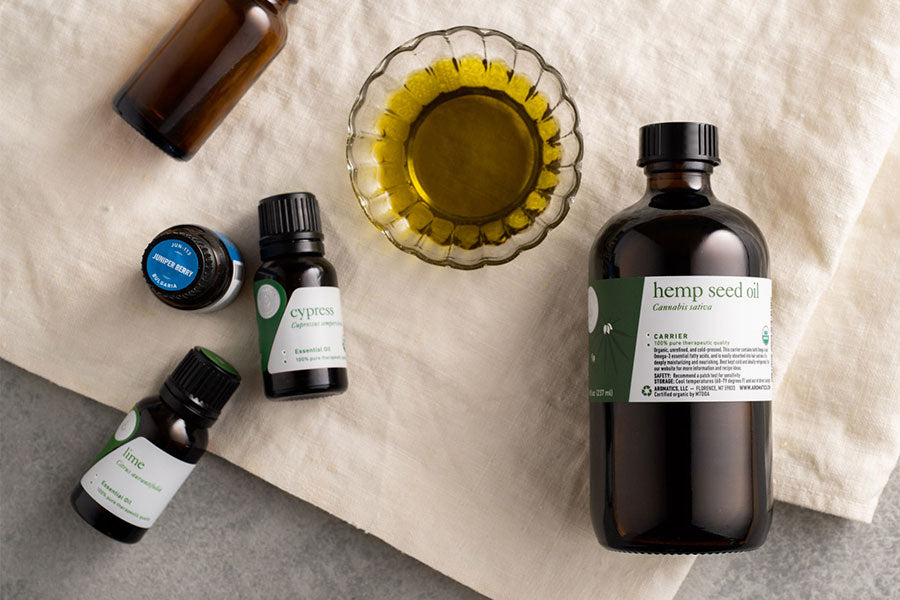What is hemp seed oil?
Hemp seed oil is made by cold pressing the hemp seeds of the Cannabis sativa plant. It’s light, silky, and full of skin-nourishing essential fatty acids.
What hemp seed oil DOESN’T contain is any psychoactive substances present elsewhere in the cannabis plant. This cold pressed extraction method, unlike some other hemp oils, results in no THC—or even CBD—in hemp seed oil. All you get is pure goodness and health benefits for your skin!

Hemp seed oil smells nutty and rich. Since hemp seed is one of the more delicate carrier oils, it should be stored in the fridge—or at least in a cool, dark area. Hemp seed oil doesn’t like too much heat. Read on to learn what makes hemp seed oil so soothing, and why people with sensitive, oily, and acne-prone skin love it!
Hemp oil science
Organic hemp seed oil is rich in linoleic and linolenic fatty acids, along with some oleic acid. Hemp seed oil also contains vitamins A and E, making it a great antioxidant oil for skin care and immune system protection!
Linoleic acid has been shown to reduce signs of aging and brighten skin tone, creating a more smooth, even complexion. It also protects the skin’s barrier, which reduces “trans epidermal water loss” (the amount of water that evaporates from skin). This means it helps keep your skin hydrated. The skin barrier also protects against environmental damage.
Oils rich in linoleic acid are especially useful for acne-prone and oily skin. Since hemp seed oil moisturizes skin without clogging pores, it’s helpful for people who need to balance their skin conditions and can provide relief from red, tender breakouts.
Hemp seed oil contains omega 6 and omega 3 fatty acids in a ratio of 3:1 (the recommended balance of polyunsaturated fatty acids for skin care).
Uses and benefits of hemp seed oil!

A lot of research has been done on the components of hemp seed oil! We know we can use hemp seed oil topically for…
- Anti-aging: Vitamins A and E in hemp oil are excellent for reducing fine lines and wrinkles.
- Antioxidant: Antioxidants (like vitamins A and E) in hemp seed oil help fight free radicals, which damage skin cells and weak skin’s structure.
- Calming irritation: The fatty acids in hemp seed oil have been shown to soothe irritated, itchy, and even reduce symptoms of sore skin conditions.
- Moisturizing: Hemp seed oil moisturizes skin and repairs the skin barrier—which prevents skin from losing hydration while protecting against environmental damage (like pollution).
- Reducing acne: Hemp seed moisturizes skin without clogging pores. It can even soothe redness and breakouts. Linoleic acid plays a big role here!
- Soothing discomfort: Hemp seed oil contains plant sterols that can comfort muscles, reduce inflammation, and provide joint pain relief.
- Skin repairing: Use hemp seed oil to help damaged skin repair itself. Oleic acid is particularly helpful for this!
Hemp seed oil recipes
Other exotic carrier oils!

Organic hemp seed is one of our favorite Exotic carriers for luxurious blends!
Our hemp production is done in Canada. The other oils on our list come from all around the world—West Africa, Madagascar, and more. Learning to use these less common carriers means you can make a wider range of therapeutic blends for yourself and your clients.








